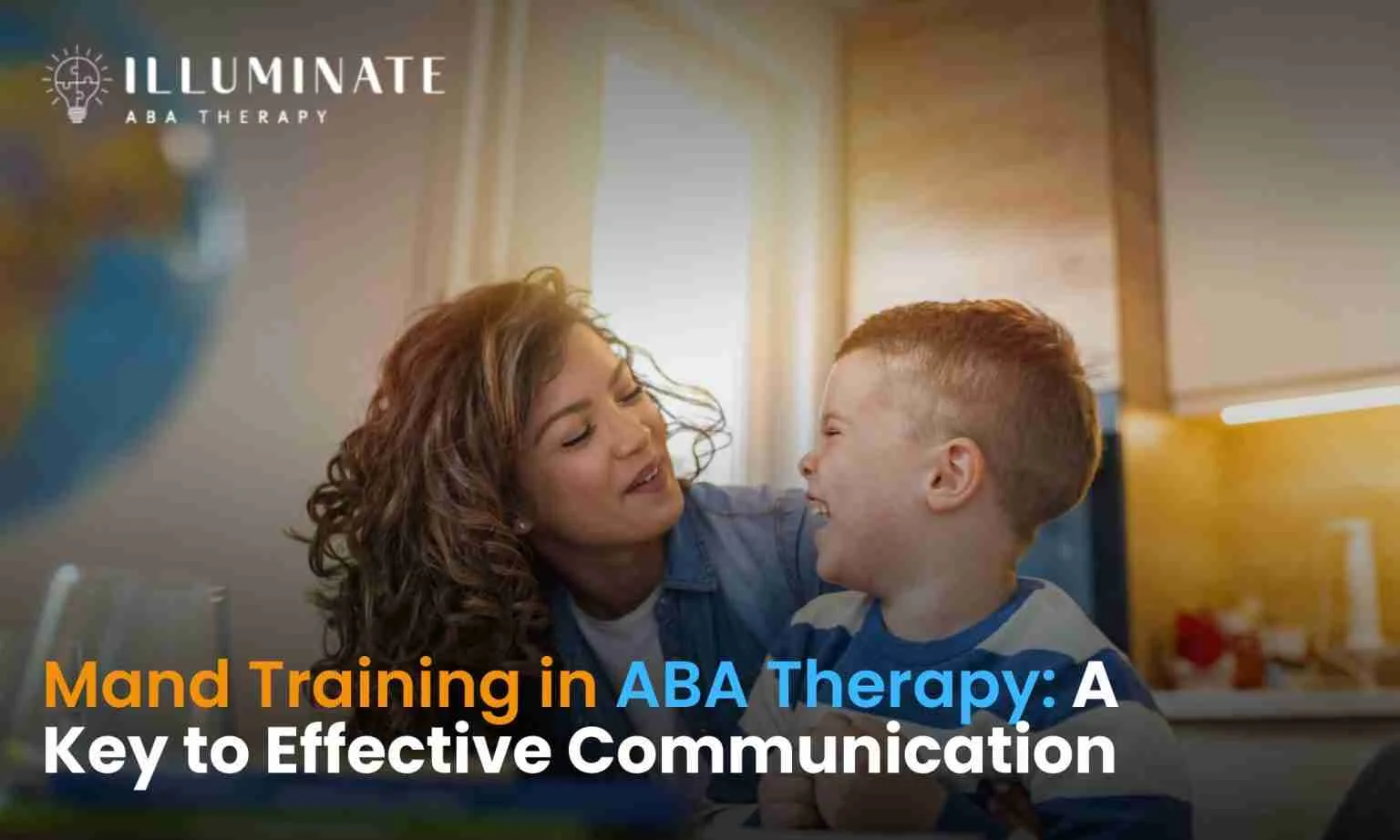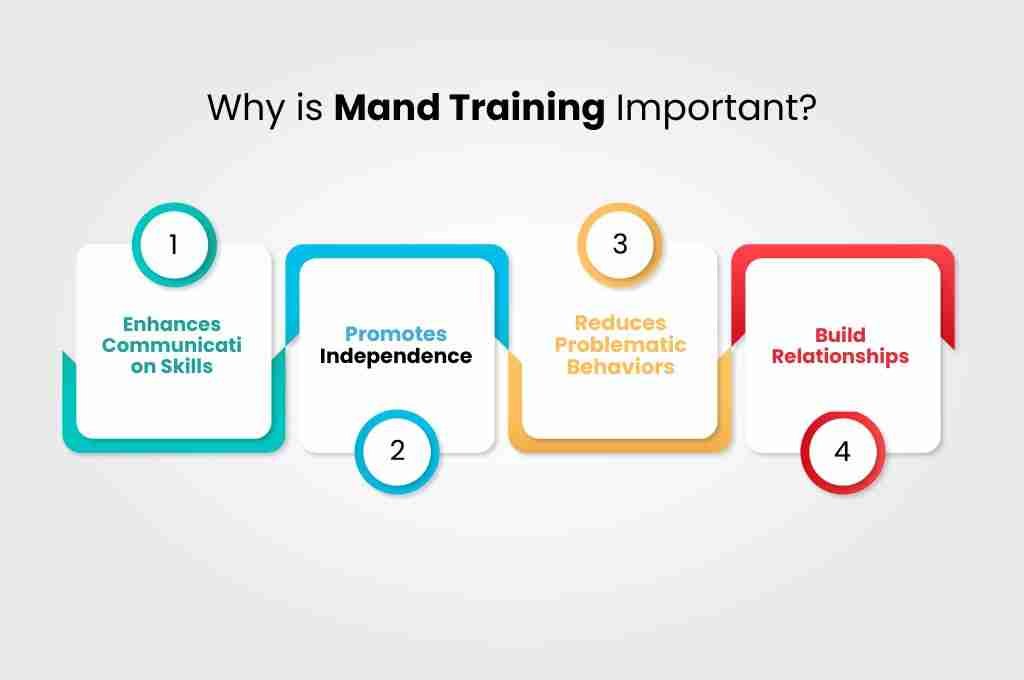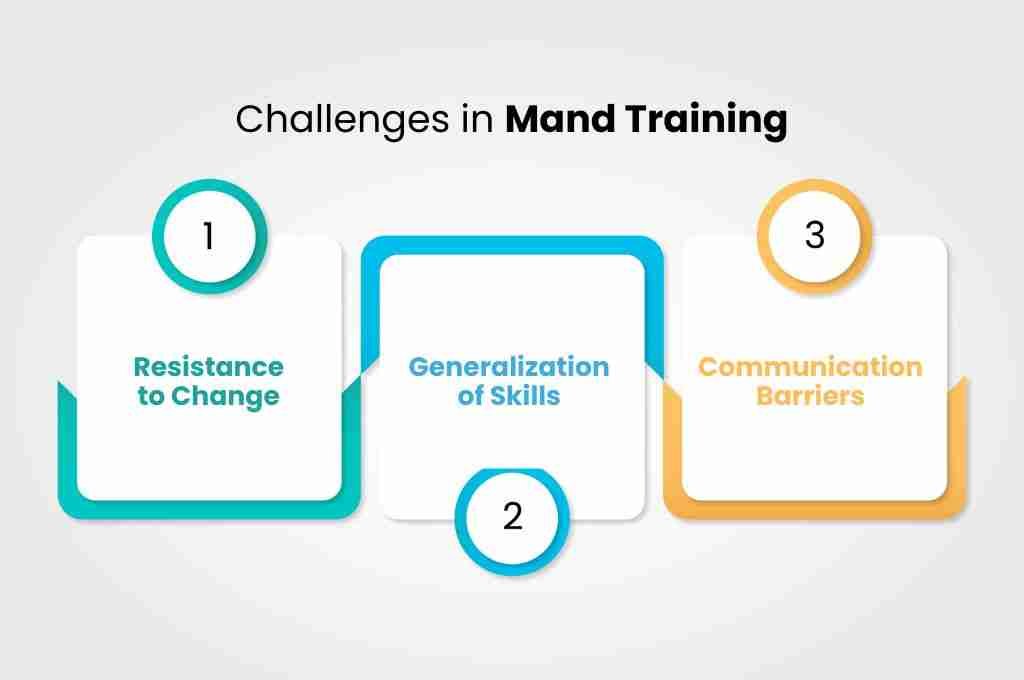Mand Training in ABA Therapy: A Key to Effective Communication
ABA TherapyJuly 17, 2025

Applied Behavior Analysis (ABA) therapy is a widely recognized approach for helping children with autism and other developmental disorders. Among its various techniques, Mand Training stands out as a crucial component that fosters communication and independence.
In this blog post, we will delve into what Mand Training is, its significance in ABA therapy, practical strategies for implementation, and how it can make a profound difference in the lives of children and their families.
What is Mand Training?
Mand Training is a specific type of communication training within the ABA framework. The term "mand" originates from B.F. Skinner's analysis of verbal behavior, where it refers to a request or demand made by an individual. For example, when a child says "juice" to request a drink, they are using a mand.
This training focuses on teaching children to express their needs and desires effectively. It emphasizes functional communication—helping children learn how to ask for what they want or need rather than resorting to challenging behaviors like tantrums or aggression.
Why is Mand Training Important?

- Enhances Communication Skills: Mand Training lays the foundation for effective communication. Children learn to express their needs verbally or through alternative means (like sign language or picture exchange), which can significantly reduce frustration and improve social interactions.
- Promotes Independence: By teaching children how to request items or actions independently, Mand Training fosters self-sufficiency. This skill is vital as it empowers children to navigate their environments more confidently.
- Reduces Problematic Behaviors: Many challenging behaviors stem from an inability to communicate needs. By equipping children with the skills to express themselves appropriately, Mand Training can lead to a decrease in these behaviors.
- Build Relationships: Effective communication is key to forming relationships. As children learn to express their wants and needs, they become more engaged with peers and caregivers, leading to stronger social connections.
Techniques for Implementing Mand Training
Implementing Mand Training requires careful planning and consistency. Here are some effective strategies:
Use Natural Environment Teaching (NET)
Natural Environment Teaching involves teaching skills in the context of everyday activities rather than in structured settings. For example:
- Setting Up Opportunities: Create situations where the child can ask for something they want. If they enjoy playing with blocks, place them just out of reach and encourage them to ask for help or to play with them.
- Reinforcement: When the child successfully mands for an item or activity, immediately provide it as reinforcement. This positive feedback strengthens the association between the request and the outcome.
Start with High-Preference Items
Begin training with items or activities that are highly preferred by the child. This increases motivation and engagement during the learning process.
- Example: If a child loves stickers, use them as a target item for mand training sessions.
Use Visual Supports
Visual supports can enhance understanding and communication skills:
- Picture Exchange Communication System (PECS): Teach children to use pictures to represent items they want. This system allows them to exchange pictures for actual items, reinforcing their ability to communicate effectively.
- Visual Schedules: Create visual schedules that outline daily activities, helping children understand what will happen next and when they can request specific items or activities.
Model Appropriate Mands
Children often learn by imitation:
- Demonstration: Model appropriate mands during daily interactions. For instance, if you want a snack, say "I want a cookie" aloud while reaching for it, encouraging the child to mimic your request.
- Prompting: Use verbal or physical prompts to guide the child in making requests until they can do so independently.
Consistency is Key
Children often learn by imitation:
- Demonstration: Model appropriate mands during daily interactions. For instance, if you want a snack, say "I want a cookie" aloud while reaching for it, encouraging the child to mimic your request.
- Prompting: Use verbal or physical prompts to guide the child in making requests until they can do so independently.
Consistency is Key
Consistency across different settings (home, school, therapy) is vital for success:
- Involve Everyone: Ensure that all caregivers and educators are on board with using mand training techniques consistently throughout the child's day-to-day life.
- Track Progress: Keep records of successful mands and areas needing improvement. This data can help tailor future training sessions effectively.
Challenges in Mand Training
While Mand Training can be incredibly beneficial, there are challenges that may arise:

- Resistance to Change: Some children may initially resist using verbal requests if they are accustomed to getting what they want through other means (like crying). Patience and persistence are essential.
- Generalization of Skills: Children may learn mands in one setting but struggle to apply them in different environments or with different people. Reinforcing skills across various contexts can help overcome this hurdle.
- Communication Barriers: Some children may have limited verbal skills or may not speak at all. In these cases, alternative communication methods like sign language or AAC devices should be utilized alongside mand training.
Conclusion
Mand Training is an essential component of ABA therapy that equips children with vital communication skills necessary for independence and social interaction. By implementing effective strategies such as Natural Environment Teaching, visual supports, and consistent practice across various settings, caregivers can foster meaningful progress in their children's ability to communicate effectively.
As you embark on this journey of enhancing your child's communication skills through Mand Training, remember that patience and consistency are key ingredients for success. Celebrate small victories along the way—each step forward brings your child closer to greater independence and improved quality of life.
For more insights into ABA therapy techniques like Mand Training, stay connected with us at Illuminate ABA Therapy!
Get More Insights On: Preference Assessment in ABA Therapy
